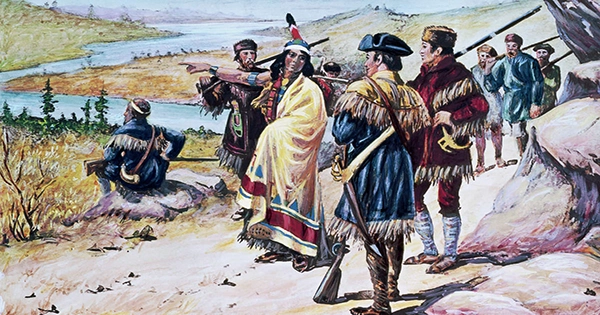In 1816, controversial American explorer William Clark organized a vast land grab from Indigenous nations and broke a peace pact with Great Britain, according to a “once-in-a-lifetime” archive find. The map was hidden behind a false identity, and it was only because to the work of University of Cambridge historian Dr. Robert Lee that it was credited, re-dated, and deciphered.
Lee viewed the map in microfilm under the authorship of Captain Eli B. Clemson, but the scholar realized that it didn’t make sense in light of the 1808 Osage Treaty, which saw the Osage Nation relinquish all land east of the fort in Missouri and Arkansas north of the Arkansas River to the United States. Clark, one half of the renowned Lewis and Clark expedition that explored the interior of the United States from 1803 to 1806, was previously hailed as an American “hero,” but his image as a “friend to Indians” has been questioned, and he has come under growing scrutiny.
The map depicts a major land grab, according to the journal William and Mary Quarterly. Clark, the Missouri territory’s governor at the time, used the map to add 10.5 million acres of Sauk, Meskwaki, and Iowa territory to the United States, an area roughly similar to Switzerland. “This incredible map depicts how William Clark used the US–Indian treaty system to promote settler supremacy in the United States at a time when he was lauded for attempting to defend Indigenous territory from squatters.” “In a statement, Lee stated.”Now we can understand how crafty and deceitful he truly was.”
The researchers described how the style, spelling, and symbols are all consistent with Clark’s work, but one passage in particular is crucial to the authorship re-establishment. The map was accompanied by a letter from Clark describing the line between the Arkansas and Red Rivers, which was lost in 1951. This line is a unilateral redrawing of the 1808 treaty, appropriating half of today’s Missouri from the region’s Indigenous peoples. It also violated the Treaty of Ghent, which ended the War of 1812 with the United Kingdom. The official directive was to re-establish pre-war borders, including those with indigenous peoples.
“According to a naive interpretation, he discovered a large loophole in the Treaty of Ghent.”A realistic assessment would be that he broke it in order to capture a landmass three times the size of Connecticut,” Lee added. “Clark’s land grab was successful because he pretended that his postwar interpretation of the Osage Treaty was novel. He deliberately pretended that he had clarified an old boundary rather than creating one. Because his strategy worked so well, historians have chosen to either believe him or ignore the occurrence.”
Thousands of emigrants, many of them slave owners, were drawn to the new (and cheap) territory. Missouri became a state in 1821 as a result of a growth in settler population, and the claims of the Sauks, Meskwakis, and Iowas were dismissed. In 1824, Clark paid the Nations half a penny an acre, while the land was selling for $4 to $12 per acre.
Clark is thought to be responsible for the confiscation of 419 million acres of Indigenous territory. By the time Clark died in 1838, the United States had claimed nearly one-third of all the land it had claimed. For the Sauks, Meskwakis, and Iowas, the land grab contributed to years of hardship.
















